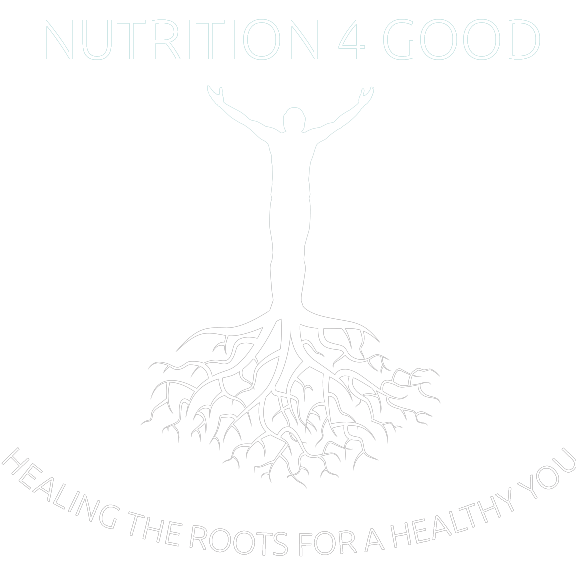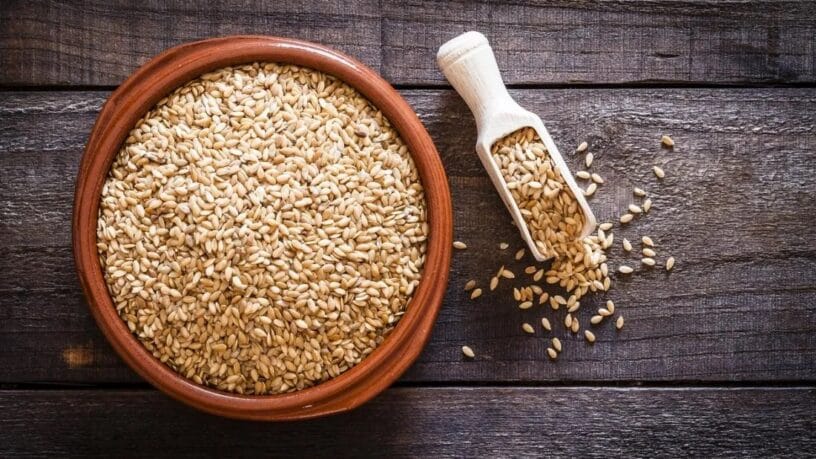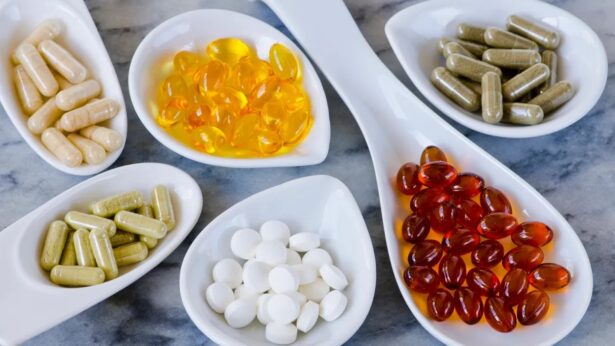Most people are now familiar with Flaxseeds as they are more available in food stores. Many people are using them as a ‘Superfood”. As indeed they are. The major nutritional components of flaxseed are oil ,fiber and protein as the chart shows for 100 grams. 4oz approx
Protein 20%
Fat 40%
Fiber 28%
Ash 4%
Moisture 7%
Of that fat content 57% is Omega 3 and 16% is Omega 6.This is good news as these are the fats that we need to be healthy. Both Omega 3 and Omega 6 fats are known as Essential Fatty Acids (EFA’s).”Essential” means we have to obtain them from dietary sources as the body cannot make them. Flaxseeds are the second richest plant source of Omega 3. (Chia seeds are the richest). This is good news because there are not many foods rich in Omega 3. We need a good ratio of Omega 3 fats to Omega 6, otherwise the body promotes undesirable inflammation. This ratio should be 1:1. This research is based on what our ancestors ate. The problem is that with all the Omega 6 oils (PUFA’s) and the “margarines” that were made since the war the ratio has become completely off the scale e.g. 1:20-50. We need to fill up more on Omega 3 fats!
Omega 3 fats are required for maintaining the structure of cell membranes giving them permeability and flexibility. They modify several risk factors for coronary heart disease, reducing blood pressure and serum triglycerides. They also protect against thrombosis, certain types of cancer and modify immune and inflammatory reactions. These fats have been shown to regulate gene transcription and expression
Dr Mercola writes:
“In fact, dietary fat intake has been among the most widely studied dietary risk factors for breast and prostate cancers. Two studies from 2002 explain how omega-3 can protect against breast cancer. BRCA1 (breast cancer gene 1) and BRCA2 (breast cancer gene 2) are two tumor suppressor genes that, when functioning normally, help repair DNA damage, a process that also prevents tumor development.
Omega-3 and omega-6 fats have been found to influence these two genes – omega-3 tends to reduce cancer cell growth, while highly processed and toxic omega-6 has been found to cause cancer growth.”
The whole seeds have many benefits.
- Fiber – As well as excellent source of fat the seeds supply both soluble and insoluble fiber. This helps keep the colon clean, encourage good bowel movements and slows down stomach emptying thereby increasing nutrient absorption.
- Weight Loss – Flaxseeds contain lignans which are compounds that form the building blocks of plant cell walls. They are converted in our intestines by the good bacteria to produce a form that the body can assimilate. Studies have also shown that high levels of lignans can support healthy weight and glucose metabolism, reducing the risk of insulin sensitivity, metabolic syndrome and diabetes.
- Immune System – They enhance the function of immune cells. They contain reasonable sources of zinc, magnesium and selenium which are needed for an efficient immune system. Research shows that this type of immune modulation has been helpful for auto-immune conditions such as Lupus, Rheumatoid arthritis, psoriasis, and MS.
- Blood Pressure – Several trials have shown that 1oz (about 2 tbs) of flaxseeds can significantly lower blood pressure by 15 mmHg (systolic) and 7 mmHg (diastolic) after 6 months. One way is that the flaxseeds reduce “oxylipins” that cause vascular constriction. Flaxseeds also contain the amino acid arginine, when converted to nitric oxide has ability to lower blood pressure.
Ways to Use Flaxseeds
There are countless ways to use flaxseeds in your diet. Here are just a few suggestions. It is usually best to use ground or cracked seeds as they are difficult to digest when eaten whole (and they can easily get stuck in your teeth!!)
- Sprinkled on oatmeal or other cereal.
- Sprinkled on top of hot soups – this adds protein as well as fiber
- Salads – they can add a lovely nutty flavor to salads.
- In a smoothie, whether with fruit or vegetables or a combination. You may want to grind the seeds first so they are really ground. This depends on the efficiency of your blender.
- Snack – in plain yogurt with your choice of fruit, some a few walnuts (more omega 3!) and 1 -2 tbs flaxseeds
- In baking – they are great for making your own flapjacks, protein bars, muffins etc.But is is important to know only cook in a low oven heat no more than 300º. Otherwise you are creating lots of free radicals.




